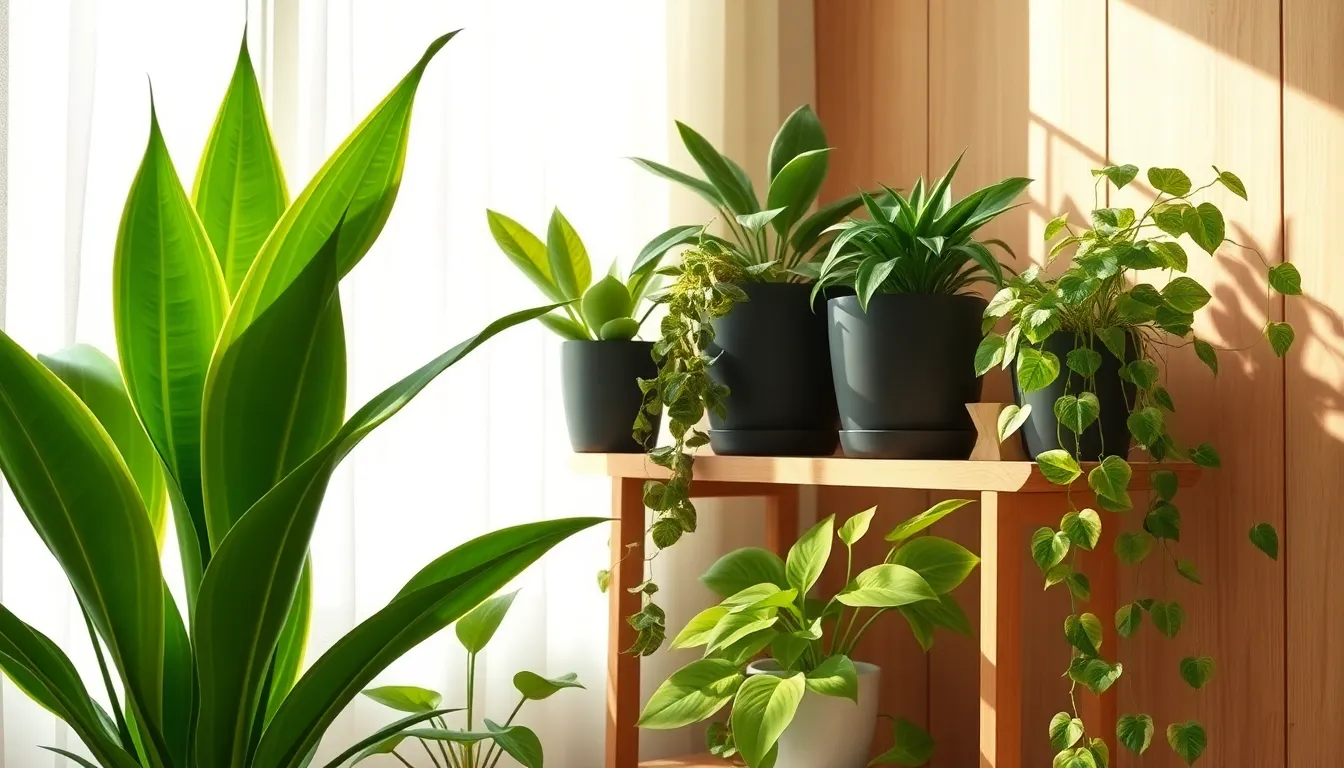Welcome to the lush world of low-light houseplants, where even the shadiest corners of your home can burst with life and vitality! Whether you’re just beginning your gardening journey or have years of experience under your belt, this guide is crafted to inspire and equip you with the knowledge to transform dim spaces into vibrant havens of greenery. The joy of nurturing plants can be yours, no matter the lighting conditions you face.
In this carefully curated guide, you’ll discover a selection of resilient indoor plants that thrive where others might wither. This list is not only a celebration of nature’s adaptability but also a practical resource packed with tips and tricks that will bolster your confidence and ensure your gardening success. You’ll soon find that with the right choices, even the most challenging environments can become a gardener’s delight.
Imagine the satisfaction of watching your plant collection flourish, bringing fresh air and beauty to every corner of your home. Let this guide be your companion as you embark on a rewarding journey of growth, fostering a deeper connection with nature and reaping the countless benefits of a thriving indoor garden.
Peace Lily (Spathiphyllum wallisii)
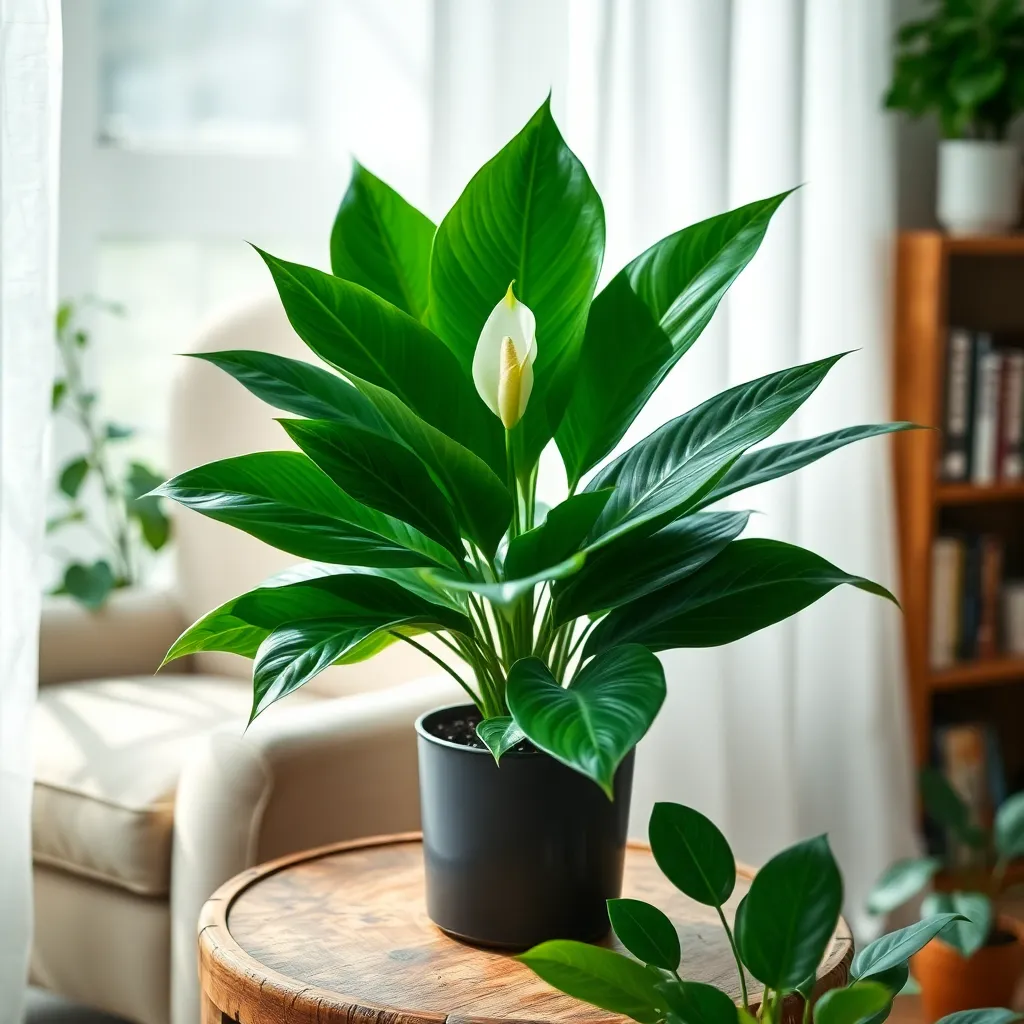
The Peace Lily, or Spathiphyllum wallisii, is a fantastic choice for anyone looking to add a touch of greenery to low-light areas in their home. Known for its elegant white blooms and lush foliage, this plant is both visually appealing and easy to care for.
To keep your Peace Lily thriving, it’s important to understand its watering needs. This plant prefers to be kept moist but not soggy, so check the soil regularly and water when the top inch feels dry.
For optimal growth, place your Peace Lily in well-draining soil enriched with organic matter. A potting mix designed for houseplants, with a blend of peat, pine bark, and perlite, will ensure proper drainage and aeration.
Even though the Peace Lily can tolerate low light, it will bloom more profusely with some indirect sunlight. Try placing it near a north or east-facing window to give it just the right amount of light without direct sun exposure, which could scorch its leaves.
Fertilizing your Peace Lily every six to eight weeks during the growing season can help maintain its health and vigor. Use a balanced, water-soluble fertilizer diluted to half strength to avoid over-fertilization, which can damage the plant.
Cast Iron Plant (Aspidistra elatior)

The Cast Iron Plant (Aspidistra elatior) is renowned for its ability to thrive in low-light conditions, making it a perfect fit for dimly lit rooms. Its robust nature allows it to withstand neglect, providing a durable option for those new to indoor gardening.
For optimal growth, place your Cast Iron Plant in an area that receives filtered or indirect light. While this plant can tolerate low light, providing some indirect sunlight will encourage more vigorous growth.
Watering should be done sparingly, as the Cast Iron Plant prefers to dry out between waterings. It’s advisable to water only when the top inch of soil feels dry, ensuring you don’t overwater and cause root rot.
In terms of soil, aim for a well-draining potting mix to prevent waterlogged conditions. A mix containing peat and perlite can improve drainage and aeration, promoting healthy root development.
Chinese Evergreen (Aglaonema commutatum)
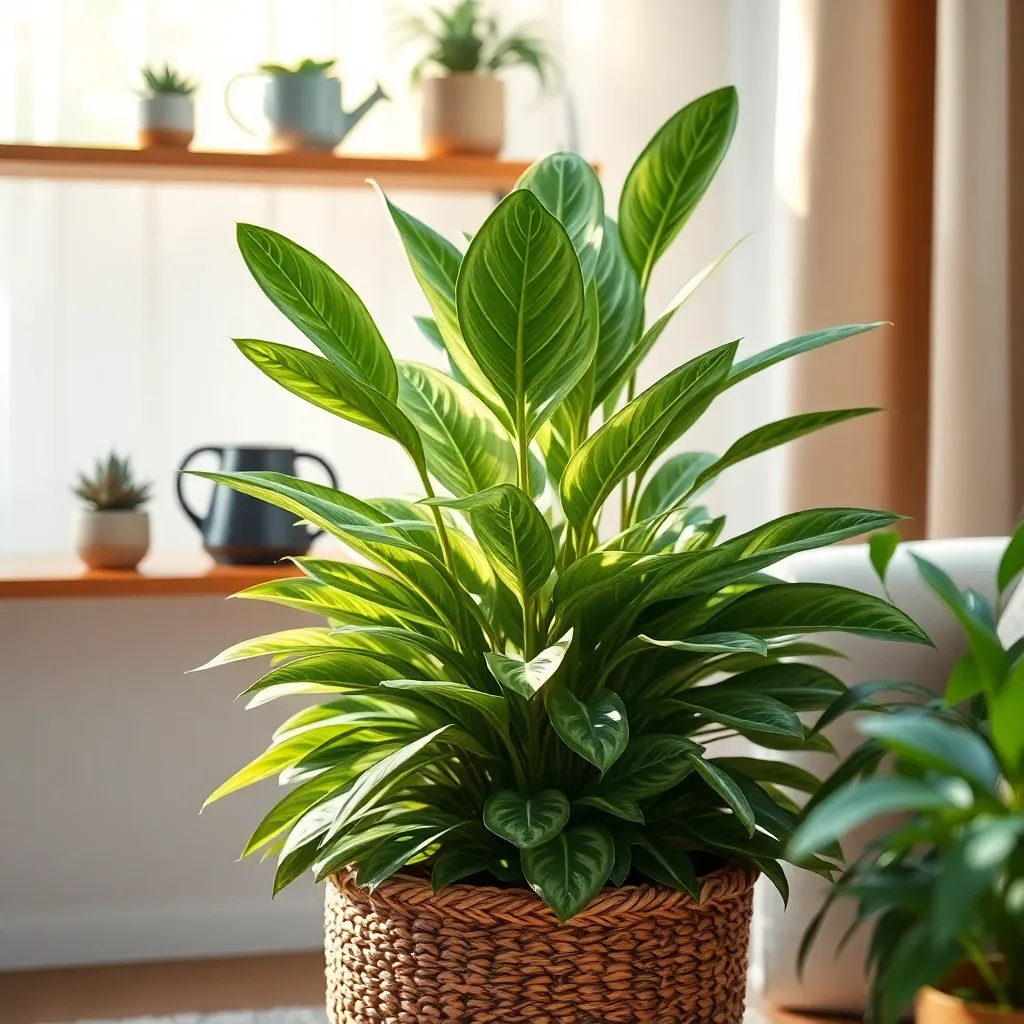
Another excellent choice for low-light environments is the Chinese Evergreen (Aglaonema commutatum), known for its adaptability and striking foliage. This plant thrives even in dim corners, making it perfect for those less sunny spots in your home.
When caring for a Chinese Evergreen, ensure the soil is well-draining to prevent root rot. A potting mix with equal parts peat, pine bark, and perlite can provide the ideal growing medium.
Water the plant when the top inch of soil feels dry, but be cautious not to overwater, as this can lead to yellowing leaves. In winter, reduce watering frequency to accommodate slower growth.
For those looking to enhance the plant’s growth, placing it in a room with consistent temperature and avoiding cold drafts can make a significant difference. Fertilizing every 4-6 weeks during the growing season with a balanced liquid fertilizer will also support lush foliage.
Parlor Palm (Chamaedorea elegans)
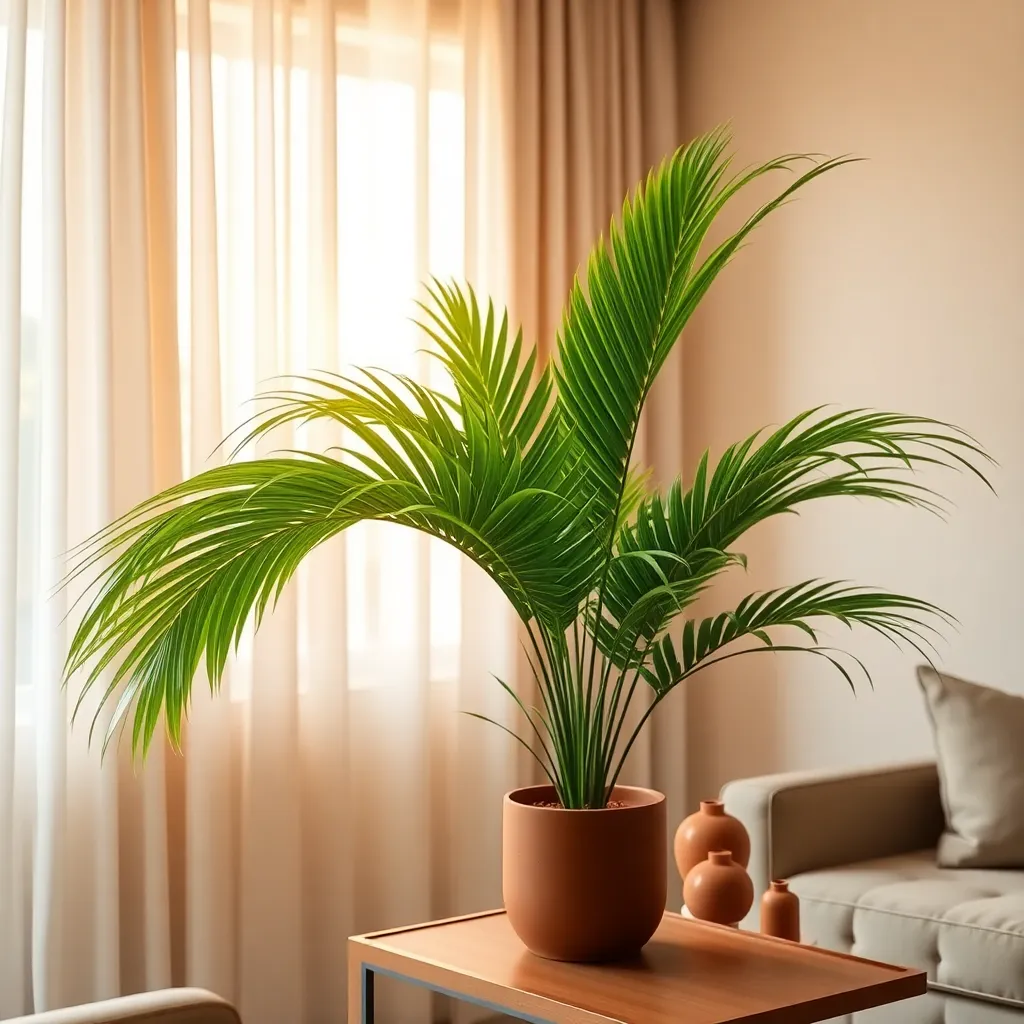
The Parlor Palm, or Chamaedorea elegans, is a wonderful addition to any home, especially in areas with limited natural light. This plant is prized for its graceful, arching fronds and ability to thrive in low-light conditions, making it perfect for north-facing rooms or offices without direct sunlight.
Begin with a well-draining potting mix to ensure the Parlor Palm’s roots remain healthy. A blend of peat-based soil with added perlite or sand works well to provide the necessary drainage and aeration for this plant.
Water the Parlor Palm when the top inch of soil feels dry to the touch, ensuring you do not overwater. Overwatering is a common mistake; ensure pots have drainage holes to prevent water from pooling at the bottom, which can lead to root rot.
Advanced gardeners can occasionally mist the leaves to increase humidity, which the Parlor Palm enjoys. In terms of feeding, apply a balanced liquid fertilizer every few months during the growing season to promote lush growth and vibrant foliage.
Spider Plant (Chlorophytum comosum)
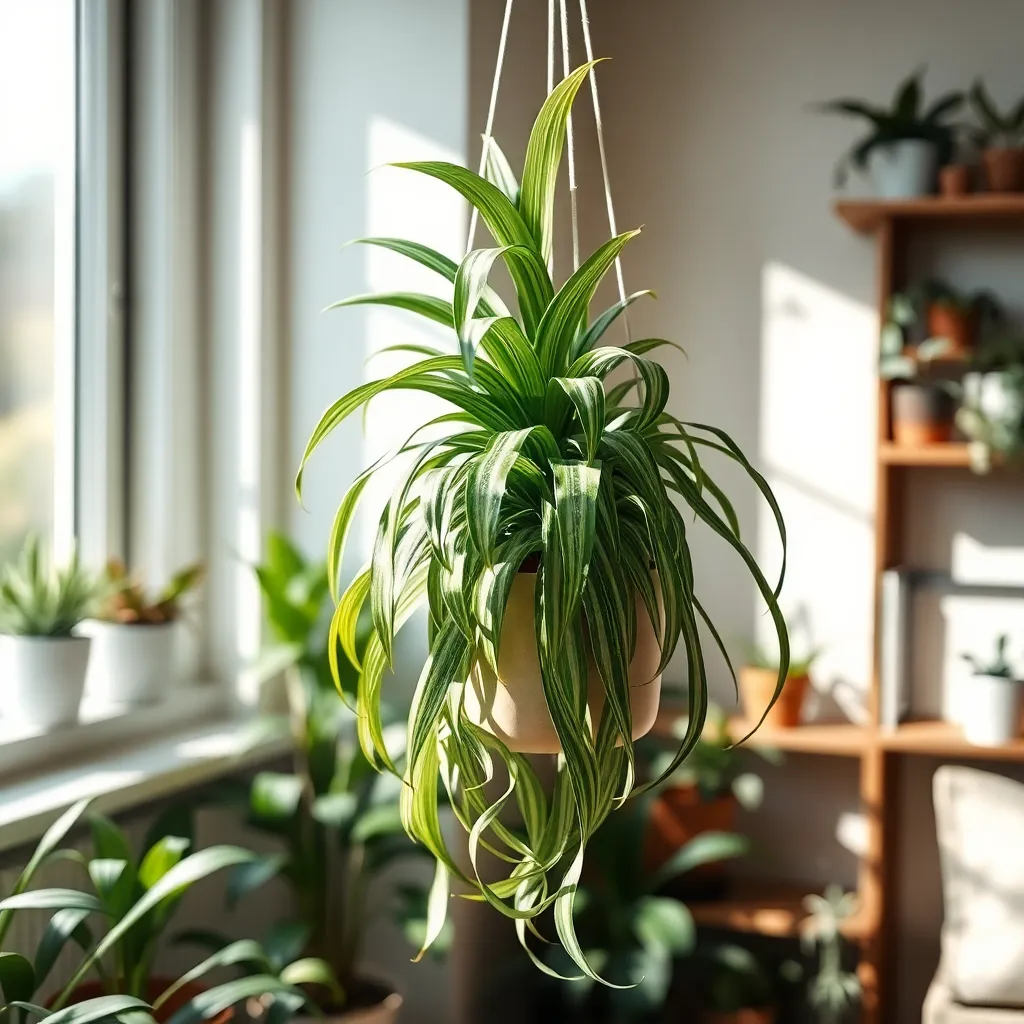
The Spider Plant (Chlorophytum comosum) is a popular choice for those seeking a resilient houseplant that thrives in low-light conditions. Its vibrant green leaves, adorned with white stripes, can add a touch of elegance to any home environment.
For optimal growth, place your Spider Plant in indirect light, as direct sunlight can scorch its leaves. It’s forgiving when it comes to watering—allow the top inch of soil to dry out before watering again, which typically means watering once a week.
While Spider Plants are adaptable, they prefer well-draining soil, such as a mix designed for indoor plants that includes peat moss and perlite. This ensures that the roots have access to both air and moisture without the risk of waterlogging.
If you’re looking to propagate, Spider Plants make it easy with their “spiderettes,” or baby plants, which can be rooted in water or directly into soil. Advanced gardeners might enjoy experimenting with hanging baskets to showcase these charming offshoots.
Conclusion: Growing Success with These Plants
Embracing the beauty of houseplants can deepen the bonds within your home, and the five key concepts explored in this article highlight how. First, enhancing communication can be as simple as engaging in a shared interest like plant care. Second, learning to nurture relationships parallels nurturing your home environment. Third, the patience required for plants to thrive can mirror the patience needed in relationships. Fourth, the presence of plants can foster a calming atmosphere conducive to deeper connections. Finally, the act of choosing plants together can strengthen decision-making as a team.
To put these insights into practice, why not select a low-light plant together with your loved one today? This small step can cultivate a shared hobby and open new channels of communication.
Remember, the path to a thriving relationship is a journey. Bookmark this article to revisit these strategies and keep your relationship flourishing. As you nurture your plants, may you also nurture a love that grows endlessly. Your relationship success is just a plant away—let it be the start of a beautiful, green journey together.

